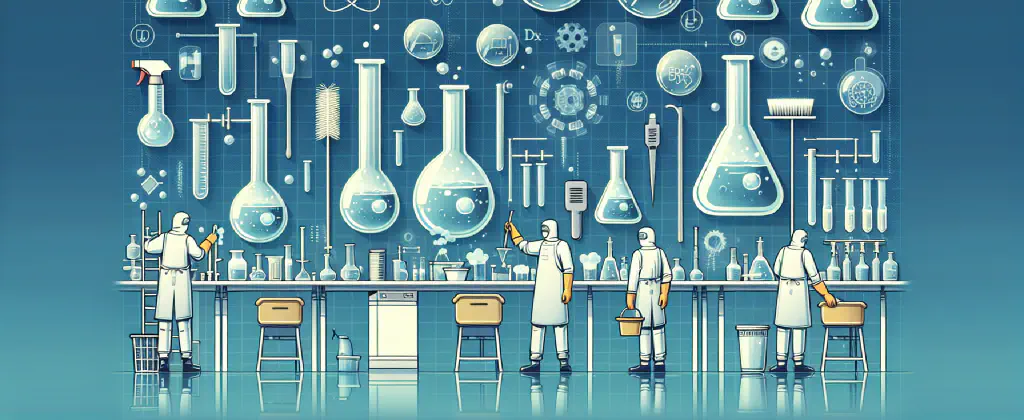14. December 2023
How to Safely Clean Chemistry Glassware

Cleaning chemistry glassware is an essential task in any laboratory setting. Properly cleaned glassware ensures accurate and uncontaminated experimental results. In this article, we will explore the best practices for cleaning chemistry glassware, as shared by experienced lab assistants and researchers.
The Base Bath Method
According to former lab assistants, using a base bath is considered the most effective method for cleaning glassware. The base bath involves using a saturated solution of potassium hydroxide (KOH) in a large container, typically made of polytetrafluoroethylene (PTFE), also known as “teflon”. Glassware is slowly immersed into the base bath, ensuring that no residual acid is present. After 24 to 36 hours, the glassware is removed and the process is repeated for the next batch. It is important to note that the base bath should be changed regularly to maintain its cleaning efficacy.
The Aqua Regia Bath
In some cases, glassware may require a more intensive cleaning method known as the aqua regia bath. Aqua regia is a mixture of nitric acid (HNO3) and hydrochloric acid (HCl) in a 1:3 ratio. This powerful mixture has the ability to dissolve gold and is used for specialized cleaning purposes. However, aqua regia is highly corrosive and must be handled with extreme caution. Protective equipment such as gloves, aprons, and face shields should be worn when working with aqua regia.
Managing Chemical Waste
Waste management is a crucial aspect of maintaining a safe and sustainable laboratory environment. Depending on the type of waste generated during the glassware cleaning process, there are different disposal methods. Labs often have separate containers for aqueous waste, organic waste, and ether waste. These waste materials are typically collected by specialized waste management companies, filtered, and in some cases, recycled or re-distilled into reagent-grade solvents.
The Dangers of Hydrofluoric Acid (HF)
Hydrofluoric acid (HF) is a highly dangerous substance commonly used in various laboratory procedures. It is known for its corrosive and toxic properties. Many researchers and lab assistants avoid working with HF due to its hazardous nature. Accidents with HF can lead to severe burns and long-term health issues. It is crucial to follow strict safety protocols and to have proper training when handling HF or any other hazardous chemicals.
Reflecting on Industry Practices
Chemical waste management is an important aspect of industrial chemistry. Companies strive to extract every bit of value from their waste streams while ensuring they are processed for both value and toxicity. Recycling and proper disposal methods are prioritized to minimize the impact on the environment.
Safety First and Always
The stories mentioned in the comments emphasize the importance of prioritizing safety in laboratory settings. Accidents and mishandling of hazardous chemicals can have severe consequences. It is crucial for researchers and lab assistants to follow proper safety protocols, wear appropriate protective gear, and receive thorough training before working with dangerous substances.
Cleaning chemistry glassware requires attention to detail, caution, and adherence to safety procedures. By following industry best practices, laboratories can maintain a safe and efficient working environment. Remember, safety should always be the top priority when working with chemicals.